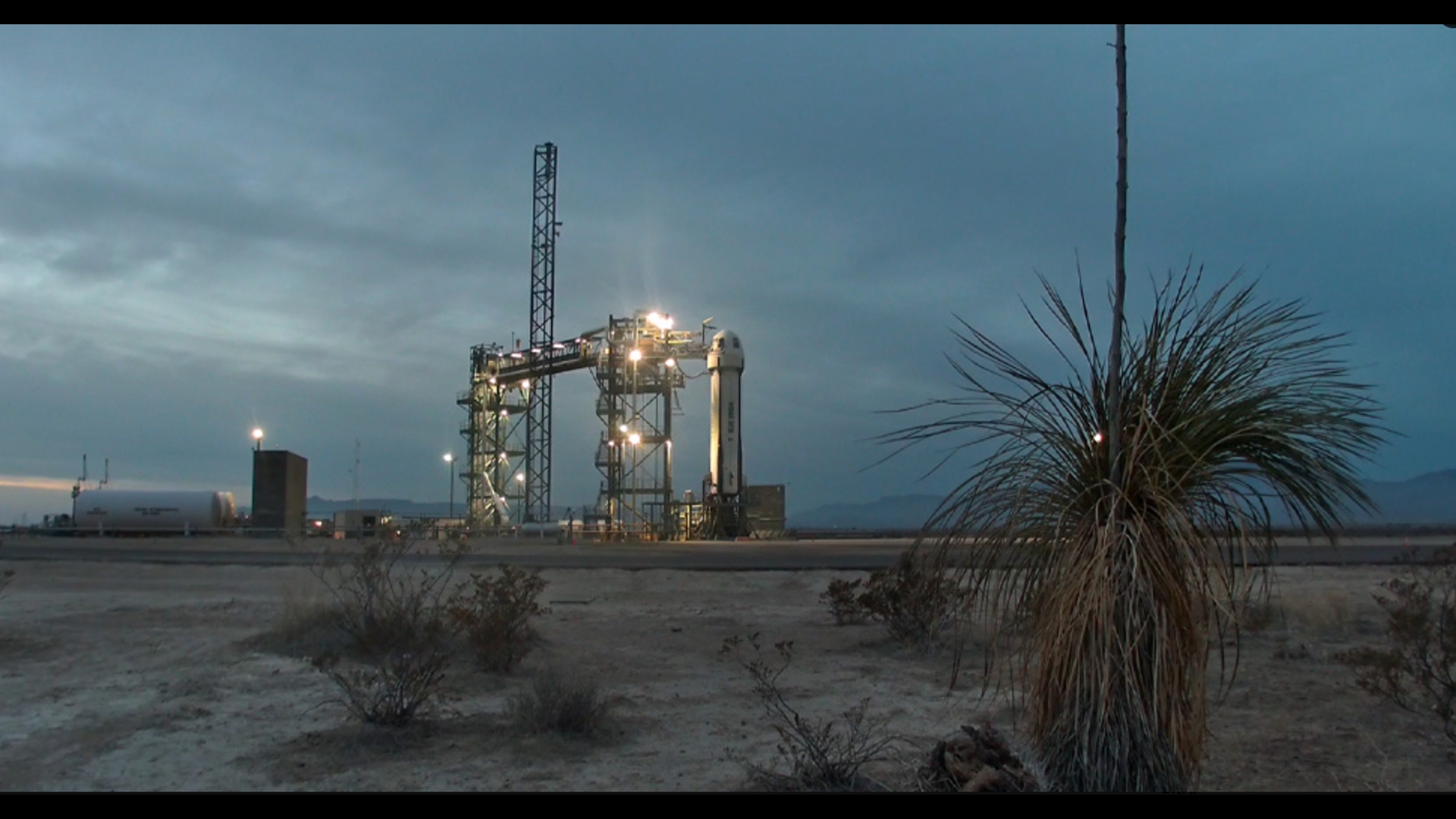The Risks Of Accelerated Everest Ascents: Concerns Surrounding Anesthetic Gas Use

Table of Contents
The Physiological Challenges of Accelerated Ascents
Accelerated ascents significantly increase the physiological strain on the body. The rapid ascent leaves little time for acclimatization, the crucial process where the body adjusts to decreasing oxygen levels at higher altitudes. This significantly increases the risk of serious altitude-related illnesses.
- Reduced acclimatization time: This dramatically increases the risk of High Altitude Pulmonary Edema (HAPE), a life-threatening condition where fluid builds up in the lungs, and High Altitude Cerebral Edema (HACE), a similarly dangerous condition affecting the brain.
- Exacerbated dehydration and electrolyte imbalances: The strenuous physical activity at high altitude, combined with the already dry air, leads to severe dehydration and electrolyte loss, further weakening the body and increasing the risk of illness.
- Increased risk of fatigue and impaired judgment: The combination of reduced oxygen levels, dehydration, and physical exertion leads to extreme fatigue and impaired cognitive function, significantly impacting judgment and decision-making, potentially leading to dangerous mistakes.
- Higher susceptibility to altitude sickness: Acute Mountain Sickness (AMS) is common at high altitude, but accelerated ascents significantly increase the severity and likelihood of developing AMS, which can progress to HAPE and HACE if not treated promptly.
Supplemental oxygen is often used during accelerated ascents to mitigate these risks, but it's not a foolproof solution. Oxygen systems can malfunction at high altitude, and even with supplemental oxygen, the body still faces significant physiological stress.
The Dangers of Anesthetic Gas Use at High Altitude
In some accelerated Everest ascents, anesthetic gases are used to manage acute mountain sickness or other altitude-related emergencies. However, the use of these gases at high altitude presents unique and significant dangers.
- Increased risk of respiratory depression and hypoxia: Anesthetic gases can depress respiratory function, further reducing the already low oxygen levels in the body, leading to hypoxia (oxygen deficiency) and potentially life-threatening consequences.
- Impaired cognitive function and decision-making capabilities: The effects of anesthetic gases on cognitive function are amplified at high altitude, where oxygen levels are already compromised, leading to impaired judgment and decision-making – extremely dangerous in such a challenging environment.
- Potential interactions with other medications used for altitude sickness: Climbers often take various medications to prevent or treat altitude sickness. The interaction between these medications and anesthetic gases can lead to unpredictable and potentially dangerous side effects.
- Delayed recovery and increased susceptibility to complications: Recovery from anesthesia is often slower at high altitude, increasing the risk of developing further complications and potentially delaying rescue efforts in an emergency.
Crucially, there's a significant lack of research on the long-term effects of anesthetic gas usage at high altitude, highlighting the need for more studies in this area.
Ethical Considerations and Commercialization of Everest Expeditions
The commercialization of Everest expeditions plays a significant role in the prevalence of accelerated ascents. The focus on profit and attracting clients often prioritizes speed over safety, raising serious ethical concerns.
- Prioritizing speed over safety: The pressure to complete ascents quickly can lead to compromises in safety protocols and risk assessment.
- Potential for inexperienced climbers to be exposed to higher risks: Commercial expeditions may accept climbers with inadequate training or experience, increasing the overall risk to the entire team.
- Lack of adequate medical supervision and support: Cost-cutting measures can lead to inadequate medical staffing and support, increasing the risk of serious complications going unaddressed.
- Environmental impact of increased traffic on Everest: The increased number of climbers undertaking accelerated ascents contributes to the environmental degradation of Everest, leaving behind waste and damaging the fragile ecosystem.
Stricter regulations and guidelines for accelerated ascents are urgently needed, along with a greater emphasis on ethical considerations within the climbing industry.
The Role of Supplemental Oxygen in Accelerated Ascents
The reliance on supplemental oxygen in accelerated ascents creates a further layer of risk.
- Risks of oxygen system malfunctions at high altitude: Oxygen systems are complex and can malfunction at extreme altitudes, leaving climbers vulnerable to hypoxia.
- Potential for oxygen dependency and related complications: Over-reliance on supplemental oxygen can lead to physiological dependence and potentially mask underlying medical issues.
- The ethical implications of relying heavily on technology to overcome natural limitations: The use of technology to bypass the natural process of acclimatization raises ethical questions about the limits of human ambition and the potential consequences of circumventing natural physiological constraints.
Minimizing Risks: Best Practices and Future Research
Minimizing the risks associated with accelerated Everest ascents requires a multi-pronged approach focusing on responsible climbing practices and further research.
- Proper acclimatization and gradual ascent: Prioritizing proper acclimatization through a gradual ascent is essential to reduce the physiological stress on the body.
- Thorough medical evaluations before attempting accelerated ascents: Comprehensive medical screenings should be mandatory for all climbers attempting accelerated ascents.
- Experienced guides and support teams: Experienced and highly qualified guides and support teams are crucial for ensuring climber safety and providing prompt medical assistance if necessary.
- Close monitoring of climber health: Continuous monitoring of climbers' health throughout the ascent is critical to detect and address potential problems early.
- Appropriate training and preparation: Climbers undertaking accelerated ascents should undergo rigorous training to prepare for the extreme physical and mental demands.
Further research is crucial to fully understand the long-term effects of accelerated ascents and anesthetic gas use at high altitude, informing safer climbing practices and regulations.
Conclusion
Accelerated Everest ascents, frequently involving supplemental oxygen and sometimes anesthetic gases, pose significant risks to climbers' health and safety. The physiological challenges of rapid ascent, combined with the potential dangers of anesthetic gas use at extreme altitudes, raise serious ethical and safety concerns. While the allure of a swift summit is strong, prioritizing safety and responsible climbing practices is paramount. We need more research to understand the long-term health implications. Let's advocate for stricter regulations and prioritize climber well-being above speed records to make Everest ascents safer and more sustainable. Let's work together to ensure that the pursuit of reaching the summit doesn't overshadow the inherent risks of accelerated Everest ascents and the responsible use of supplemental oxygen and anesthetic gases.

Featured Posts
-
 Nba Playoffs 2025 Tatums Wrist Injury Update X Rays Come Back Clean
May 16, 2025
Nba Playoffs 2025 Tatums Wrist Injury Update X Rays Come Back Clean
May 16, 2025 -
 0 2 Triunfo De Olimpia Ante Penarol Resumen Y Goles
May 16, 2025
0 2 Triunfo De Olimpia Ante Penarol Resumen Y Goles
May 16, 2025 -
 Blue Origin Launch Scrubbed Investigation Into Subsystem Failure
May 16, 2025
Blue Origin Launch Scrubbed Investigation Into Subsystem Failure
May 16, 2025 -
 Millions Exposed New Report Details Widespread Us Drinking Water Contamination
May 16, 2025
Millions Exposed New Report Details Widespread Us Drinking Water Contamination
May 16, 2025 -
 La Decentralisation Du Repechage De La Lnh Un Regret Pour La Ligue
May 16, 2025
La Decentralisation Du Repechage De La Lnh Un Regret Pour La Ligue
May 16, 2025
